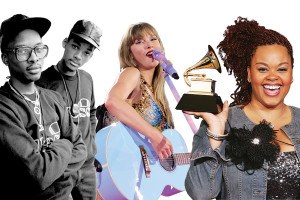Q&A: Nick Stuccio
Tomorrow marks the start of the 15th annual Live Arts Festival/Philly Fringe, with 15 curated Live Arts performances featuring the best and the brightest from Philadelphia and around the world, and 180-plus completely unvetted, uncensored shows, aka the Fringe. Here, the 48-year-old guy who started it all. (For his show picks, see here.)
What’s this opening week like for you? As crazy as I imagine it to be?
It’s crazy, all right. Especially since I just got back from Edinburgh on Monday. Every year, I like to go to Edinburgh for the end of their Fringe Fest. It’s so great to go at the end. All of the good shows have emerged and have been reviewed … So I’m just catching up.
What’s your to-do list look like?
Well, at this time of the year, the festival is really in the hands of the production and marketing departments. They’re scrambling to sell and mount shows. My job now is to just make sure that everybody’s cool, that they have what they need to get their jobs done. The details are nutty, as you can imagine—an unbelievable amount of things. You’ve just got to roll with it. Some things are going to get fucked up, and you just have to say, okay, we fucked up.
How drastically different was the arts scene here 15 years ago?
There was a very underground contemporary arts scene at the time. Nobody was doing it on any kind of major level, though the Painted Bride had been kind of a stalwart, doing some contemporary performances. But they were an island. And there was this huge underground community, and they would perform in the third-floor storerooms of bars, places like that. Around that time, you had a bunch of talented people landing here. It was a big city, and there was money around for the arts. The gang from Headlong and Pig Iron were here. There were interesting artists making interesting work, and we saw this and figured, let’s create a platform.
And how has the festival responded to the changing landscape over the years?
Every year, brick by brick, we build this for the best and the brightest. Some of it happens to be large and expensive, and we’re learning how to handle and produce it. A few years ago, we brought over this giant Polish opera. There were maybe 50 or 60 folks from Poland here. None of them spoke English. It was huge. We couldn’t really do that until we could do that. Every year, we get bigger ideas, more sophisticated ideas. We want to curatorially do things that are smarter, more interesting and in depth.
The “Fringe” element of the festival has a bit of a bad rap, kind of like the old “ten pounds of shit in a five-pound bag” idea. Can you defend that?
I do defend it. Just being in Edinburgh, I see how it works. There are like 1,500 shows a day there. People come from all over the world and fill their schedules with 15-20 shows knowing many won’t be great, but the payoff when something great comes through, those sleeper hits that came out of nowhere … I saw that show, it was awesome, I found it, I was there for it. The payoff is immense. So even the ones that fail, it’s okay. Same here. It’s worth it for the adventure. And you’d be surprised how many people are happy to take the risk and wander through Fringeland. And hey, how else are we going to find the next wave of contemporary artists? They can do it here. They can fail here. And, hopefully, from failing comes learning. You’ve got to mount it. It’s iterative. You’ve got to mount the work to find the work.
Do you have 15 more years of Fringe in you?
Hell yeah. We’re having a great time, and lots of work to do. We’re buying a building on the waterfront, across from Race Street Pier. It’s going to be a place where people can gather, socialize, find out about shows, buy tickets, and have a beer or coffee and a cheeseburger. And of course there will be performances there, year round. It’s taken 15 years to build up the means and resources to do this. We’re also going to be bringing more visual art into the festivals, and working with a new curator to develop new work in the public domain. And we want to basically be able to get to the point that we can bring any big artist we want here. We have all kinds of plans. It’s the next thing that keeps me going.


